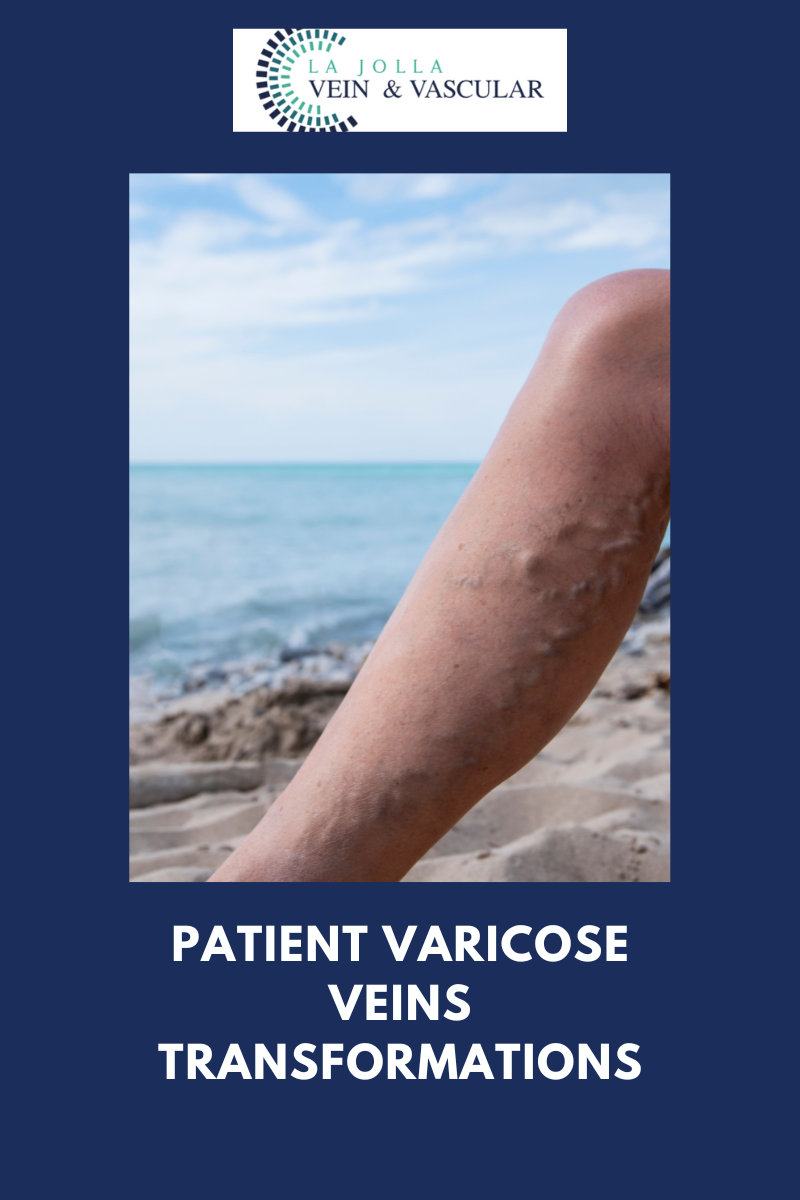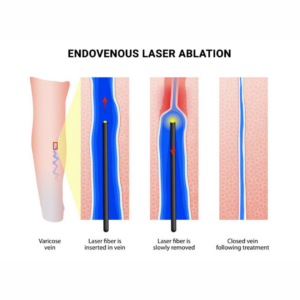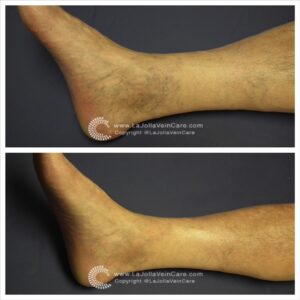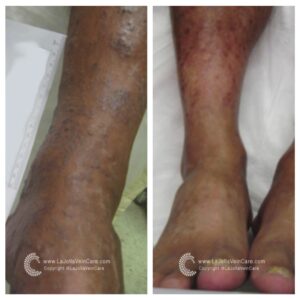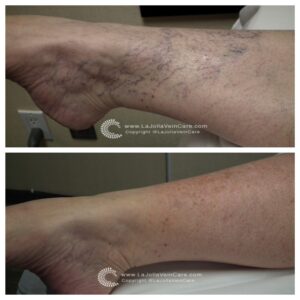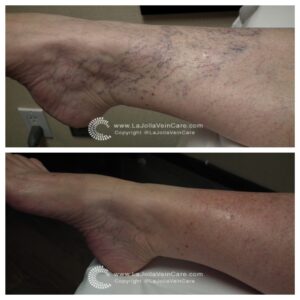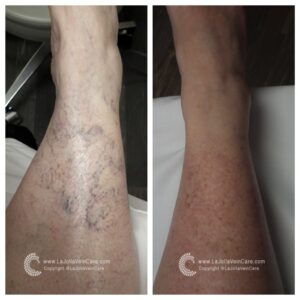Patient varicose veins transformations
LJVascular2024-10-31T21:20:52-07:00Patient Varicose Veins Transformations
Varicose veins, those twisted and bulging veins just beneath the surface of the skin, can be a common concern for many individuals. While they most frequently appear in the legs, they can also emerge in other areas of the body. In this blog post, we’ll delve into the world of varicose veins, exploring what they are, what causes them, and shedding light on potential treatment options.
What are Varicose Veins?
Varicose veins are swollen, twisted veins that are visible just below the skin’s surface. Their appearance can be alarming, but they are actually a common condition that affects many people. These veins can often cause discomfort, pain, or a heavy feeling in the legs.
Causes of Varicose Veins
The main culprit behind varicose veins is faulty vein valves. These valves are responsible for ensuring proper blood flow by allowing blood to travel towards the heart and preventing it from pooling in the veins. When these valves become leaky, blood starts to accumulate in the veins, causing them to stretch and enlarge. This condition is often a result of venous reflux disease, also known as venous stasis, venous insufficiency, or venous incompetence.
Understanding Venous Reflux
Venous reflux occurs when blood flows backward, against gravity, due to malfunctioning valves. Normally, the calf muscles aid in pumping blood upwards, but with leaky valves, blood tends to pool in the lower legs, causing the veins to bulge at the surface. This condition is frequently observed in the great and small saphenous veins, which are responsible for carrying blood from the legs back to the heart. Over 90% of the time, varicose veins in the legs are linked to these veins.
Our Research Findings
In a notable study led by Dr. Nisha Bunke and published in the Journal of Vascular Ultrasound in 2018, more than 1,000 legs with varicose veins were examined. The research revealed that the great and small saphenous veins were the primary sources of varicose veins in a majority of cases. The Great Saphenous Vein (GSV), coursing up the middle of the thigh and calf, and the Small Saphenous Vein (SSV), located along the back of the calf, were particularly implicated.
Treatment Options
Fortunately, varicose veins are not a condition without solutions. With advancements in medical technology and knowledge, treatment options are available to alleviate discomfort and improve the appearance of affected veins. Various minimally invasive procedures, including laser ablation, radiofrequency ablation, and sclerotherapy, have proven effective in treating varicose veins.
Visual Proof: Patient Transformations
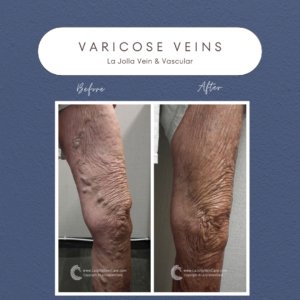
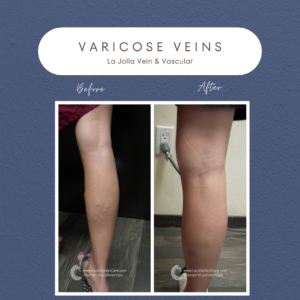
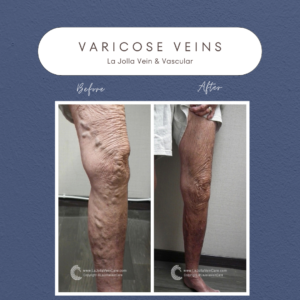
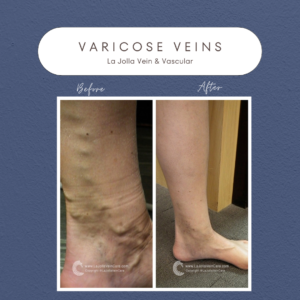
Witnessing the outcomes of varicose vein treatment can be truly remarkable. Many individuals experience significant improvements in both the appearance and symptoms of their varicose veins. These before-and-after images serve as a testament to the positive impact that proper treatment can have on one’s vascular health and overall well-being.
Varicose veins might be a common condition, but understanding their causes and treatment options empowers individuals to take control of their vascular health. With modern medical techniques, those suffering from varicose veins can seek relief and experience a significant enhancement in their quality of life. Whether it’s understanding the role of faulty vein valves, exploring the intricacies of venous reflux, or considering various treatment approaches, the journey to healthier veins starts with education and awareness.
“Bringing Experts Together for Unparalleled Vein and Vascular Care”
La Jolla Vein & Vascular (formerly La Jolla Vein Care) is committed to bringing experts together for unparalleled vein and vascular care.
Nisha Bunke, MD, Sarah Lucas, MD, and Amanda Steinberger, MD are specialists who combine their experience and expertise to offer world-class vascular care.
Our accredited center is also a nationally known teaching site and center of excellence.
For more information on treatments and to book a consultation, please give our office a call at 858-550-0330.
For a deeper dive into vein and vascular care, please check out our Youtube Channel at this link, and our website https://ljvascular.com
For more information on varicose veins and eliminating underlying venous insufficiency,
Please follow our social media Instagram Profile and Tik Tok Profile for more fun videos and educational information.
For more blogs and educational content, please check out our clinic’s blog posts!

